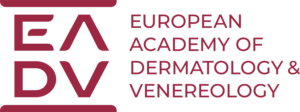Plenary lectures at the EADV Congress 2024
Plenary session with keynote lecture
Room: Auditorium
Date: Wednesday, 25 Sep, 17:45 – 19:00 CEST
Chairs
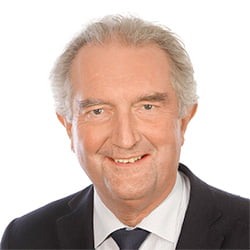

Martin Röcken


Michel Gilliet
Plenary lectures A
Room: Auditorium
Date: Wednesday, 25 Sep, 12:00 – 13:00 CEST
Chairs


Martin Röcken


Manabu Fujimoto
Neoadjuvant treatment in melanoma


Christian Blank
Professor ar the Medical School of the University of Regensburg in Germany and at the Leiden University Medical Center (LUMC) in The Netherlands. Dr Blank has been an invited speaker at more than 250 national and international congresses, and is the author of more than 200 publications. Dr Blank has been the principal investigator of several investigator initiate trials testing neoadjuvant immunotherapy in melanoma that are currently changing the treatment landscape.
Lecture summary
Neoadjuvant treatment in melanoma refers to the administration of therapeutic agents before the main treatment, usually surgery, to reduce the tumor size or burden. This approach is gaining traction in the treatment of advanced melanoma due to its potential benefits.
Artificial intelligence: Friend or foe?
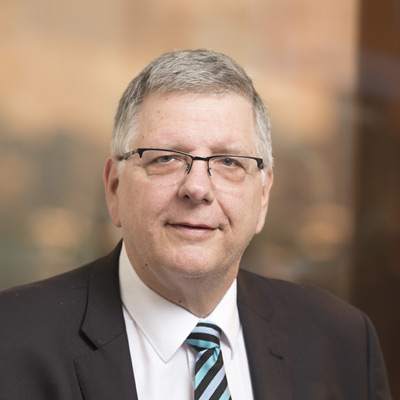

Hans Peter Soyer
Inaugural chair in dermatology at the University of Queensland (UQ) and director of the Princess Alexandra hospital dermatology department (2008 – 2022), with more than 200 publications in the last five years.
Lecture summary
Artificial Intelligence (AI) in dermatology represents a rapidly advancing frontier that has the potential to significantly enhance diagnostic accuracy, personalize treatments, and improve patient outcomes. This capability is particularly promising for the early detection of skin cancers, such as melanoma, where early diagnosis is crucial for patient prognosis.
The integration of AI into dermatology presents also challenges. One major issue is the risk of reliance on technology, potentially leading to a decline in clinicians’ diagnostic skills. Additionally, there is the question of data privacy and the ethical use of personal health information. AI systems are only as good as the data they are trained on, and biases can lead to disparities in the accuracy of diagnoses across different populations.
STDs in 2024


Henry de Vries
Henry de Vries is a dermatologist, principal investigator and professor of skin infections at the University of Amsterdam. He also works at the Amsterdam Public Health Service STI clinic and the National Centre for Infectious diseases control.
Lecture summary
In this talk, Professor Henry de Vries will give an overview of the latest developments in sexual healthcare and the disruptive effects of the COVID-19 pandemic on sexually transmitted disease (STI) epidemiology. Although the talk’s focus is on the Dutch and European situation, similar outcomes have been seen across the globe. Social and sexual distancing, a lack of healthcare resources and the eventual abandonment of lockdown measures all had profound influences on STI transmission. Mpox has been one of the coinciding global emergencies of international concern that coincided with the COVID-19 aftermath. The talk will conclude with a discussion of some of the measures at hand to curb future STI epidemics.
Plenary lectures B
Room: Auditorium
Date: Thursday, 26 Sep, 12:00 – 13:00 CEST
Chairs


Branka Marinovic


Michel Gilliet
Do big data make us bigger?


Tamar Nijsten
Tamar Nijsten is a professor in dermatology since 2012 at Erasmus MC (Rotterdam, The Netherlands) and chair since 2014. He was president of the Dutch Society of Dermatology for 4 years. He was chair of the Erasmus MC Cancer Institute.
So far, he has published over 390 peer-reviewed international papers in 2024 (H-index > 65).
Lecture summary
For big to become bigger, assuming the latter to be better, a transformation is needed. Big data on its own has limited value, but by adding knowledge and expertise, it may become very powerful.
The definition of big data emphasizes it is not just about volume, but also features velocity, value, variety and veracity (5 V’s).
The question mark in the title invites us to examine the pro and con’s of big data and its consequences such as artificial intelligence. How do we best apply, and thus balance the advantages and disadvantages, the findings of the huge amounts of data generated in clinical care and research?
A consequence of more and complex information analyses is that it generates new insights while reducing our understanding of the findings. The higher the dimensionality of the data, the more sophisticated the bioinformatices including generative AI applied, the lower its face validity.
The main responsibility of clinicians is to pose the appropriate research questions and critically interpret the findings. Without proper guidance, big data will offer solutions for non-existing problems.
Pustular psoriasis: clinical continuum or separate entity?


Jonathan Barker
Jonathan Barker is Professor of Medical Dermatology at St John’s Institute of Dermatology based at King’s College and Guy’s and St Thomas’s Hospitals, London UK. For much of his career his focus has been on the science and practice of psoriasis. His research has extended from genetic discovery (including IL-36RN in GPP and TYK2 in psoriasis vulgaris) to clinical validation. He has over 400 publications (H index = 106).
Lecture summary
Insights into immunological mechanisms, revealed in great part by genetic methodology, coupled to advances in receptor targeted therapy highlight the fact that the disease we call psoriasis appears to cover several different disease entities. This is
most obviously observed when comparing plaque with pustular forms of the disease and in part explains differential response to treatment. Most strikingly generalised pustular psoriasis (GPP), in contrast to psoriasis vulgaris (PsV), is caused by pathways involving IL-36. Rapid resolution of the disease occurs when this pathway is targeted. Mechanisms underlying localised forms of pustular psoriasis such as PPP are more complex with evidence of immunological plasticity and involvement of multiple immune pathways including Th2, perhaps explaining the inadequate response to therapies targeting PsV mechanisms. This talk will discuss these matters and provide a draft of a new way of looking at the classification of psoriasis with implications for natural history, co-morbidities and treatment selection.
Climate change, pollution and skin cancer


Susana Puig
Susana Puig is head of the dermatology department at Hospital Clínic Barcelona and full Professor at the Medicine Department, University of Barcelona, Spain. She is a dermato-oncologist expert in imaging techniques for the in vivo non-invasive diagnosis, photobiology, genetics of melanoma, melanoma immunology and therapy, skin cancer susceptibility, skin cancer therapy and carcinogenesis. She published more than 560 indexed scientific articles.
Lecture summary
Climate change is not only increasing the mean temperature in many regions, but also increasing the number of sunny days. The environmental humidity is also changing, and both have consequences on human behaviors, increasing the UV dose received by human skin. Indoor and outdoor pollution also represent a growing threat to human health worldwide. Airborne pollution is highly associated with respiratory disease and cardiovascular disease but it also has a significant effect on other organs, including the skin. Main airborne pollutants include gases as CO, NOx, O3, SO2; heavy metals as lead, cadmium, nickel or arsenic; particulate matter; dioxins; polyaromatic hydrocarbons (PAHs) and Volatile organic compounds (VOCs).
As an external barrier, the skin is in direct contact with air pollutants. Recent epidemiological and mechanistic studies suggested that air pollution is affecting skin integrity (Krutmann et al., 2014). Air pollution and ultraviolet radiation negatively interact with each other (Passeron et al., 2020) having an additive damaging effect on the skin. They are involved in many skin disorders from photoaging to skin cancer, but also psoriasis, atopic dermatitis and other inflammatory conditions.
It is not easy to avoid the negative effects of environmental pollution, but we can use some strategies to help the skin repair itself and protect it from its environment, including the use of antioxidants, but also other as the use of micellar water to remove
substances from our skin or emollients to restore the skin barrier, the use of sunscreens to prevent the formation of photoreactive compounds and the use of aryl hydrocarbon receptor antagonist.
Plenary lectures C
Room: Auditorium
Date: Saturday, 28 Sep, 12:00 – 13:00 CEST
Chairs
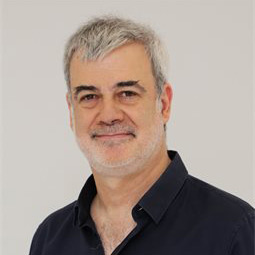

Eli Sprecher
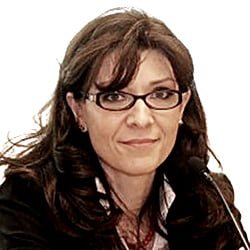

Carmen Maria Salavastru
JAK inhibition: Quo vadis?


Massimo Gadina
Chief of the Translational Immunology Section within the Office of Science and Technology (OST) at the National Institute of Arthritis Musculoskeletal and Skin diseases at the NIH. He is also an Adjunct Professor in the Department of Microbiology and Immunology at Georgetown University. Dr. Gadina’s research interests are focused on the biology of cytokines, their relative signaling pathways, and specifically on the role of these molecules in driving immune-mediated diseases.
Lecture summary
Over the past ten years, drugs targeting the Janus kinases (JAKs) have entered the clinical armamentarium and first generation pan-JAK inhibitors (JAKinibs) are now used worldwide for the treatment of autoimmune diseases as well as malignancies. Studies on the mechanism of action of successful JAK inhibitors have revealed that, besides T and B cells, they act on innate immune cells and can promote tolerance. For this reason, JAKinibs are proving to be useful for a variety of immunological diseases ranging from hematological malignancies, rheumatoid arthritis, psoriatic arthritis, diabetic nephropathies, alopecia to rare inflammatory diseases.
More selective, second-generation JAKinibs as well as newer, third-generation, have now reached the clinical stage. Nonetheless newer JAKinibs are being developed taking advantage of our better understanding of JAKs structure. While some of these drugs are still being developed, others are in late stages of clinical development for several of immune-mediated pathologies.
Dr. Gadina will review the most recent findings related to JAKinibs’ mechanism of action focusing on the issue of selectivity, briefly discuss their side effect and toxicity and comment about the lessons we have learned so far and what are the questions and challenges that this relatively new class of drugs is still facing.
Insights on the skin barrier from severe ichthyosis


Edel O’Toole
Edel O’Toole is Professor of molecular dermatology and co-director of the HARP Doctoral Programme at Queen Mary University of London. She is also a consultant dermatologist at the Royal London Hospital with an interest in paediatric dermatology and rare genetic skin disorders. Her research interests include biology of the basement membrane zone and the skin barrier in common and rare skin diseases. She is Chair of both the Medical Advisory Board of the Ichthyosis Support Group and the DEBRA UK Scientific Grants Advisory Panel. In 2023, she received the Moxon Trust medal (a triennial gold medal awarded for distinguished research and observation in clinical medicine) from the Royal College of Physicians, London.
Lecture summary
Prof. O’Toole will use harlequin ichthyosis as an example of severe ichthyosis and will talk about clinical aspects, modelling the disease in the laboratory and recent work from her group on ichthyosis and JAK inhibitors using 3D and in vivo models and multiomic approaches. She will also talk about public and patient engagement.
The role of dermatopathology in modern dermatology


Dieter Metze
Dieter Metze is Senior Professor for dermatology, former vice-chairman and director of the dermatopathology unit, current director of the International Training Centre for Dermatopathology of the ICDP/UEMS of the department of dermatology, Münster.He has authored/co-authored more than 400 publications and book chapters and serves as a reviewer for many journals. His main interests are clinical dermatology, dermatopathology, and electron microscopy.
Lecture summary
Dermatopathology not only enables diagnosis, but also contributes to the understanding of skin physiology and pathogenesis of diseases and is often the basis for the development of new therapies. A multidimensional approach in terms of
histological patterns, algorithms, lesion lifespan, collision and interference phenomena expanded the possibilities of conventional light microscopy. The development of electron microscopy, confocal laser scanning microscopy, 5-D intravital tomography, in situ hybridization, FISH, PCR and gene expression profiling has greatly advanced the study of skin tissue. This has made it possible to identify new genetic, infectious, autoimmune or autoinflammatory diseases and drug reactions. The integration of molecular data and morphology has led to a reclassification of many neoplasms and enables individualized tumor therapy. Dermatopathology will remain a backbone of dermatology in the future and should be recognized and promoted accordingly.

